Dirt Biking and Illegal Immigrants
On Tuesday we awoke to find ourselves the only yacht in the harbour
. Our friends on 'Boreal' had left in the wee small hours to go North in the last weather window for a few days, they were more courageous (or perhaps less lazy) than us . That evening we went to the Internet Café, checked the weather and saw that it was going to be hot with fresh to strong Northerly winds for a few more days.
We decided to hire a motorbike to see a bit more of Northern Lesvos and also to find a Lidls supermarket to stock up on cheap booze.
We set off on a beautiful Wednesday morning to attempt a circular trip to Mitilini and back, via Petra, to Mithimna. After checking the map we saw that we could take in the pretty fishing hamlet of Skala Sikamineas en route. It showed A class roads the whole way.
That was our first mistake, never believe Greek tourist maps! The mendacious wee sods are designed to get tourists to the places which took adverts out on the back of the map, and will cheerfully tell you anything to get you there. After about 3 miles the road became a dirt track which then became a minor off road course
. Things got really bad when we saw a military speed limit notice giving the maximum speeds for tanks and jeeps (true!). Our wee 125cc bike was designed for nipping stylishly about town, not moto-cross!
Nonetheless the views across the straits to Turkey were glorious in the morning sun. The sea was a deep blue black with only the shallows being a rich azure and the sun sending golden streaks of light across the surface. Despite the dangers of offroading on a moped, we were rather enjoying the ride - well Gina was, Rob was wondering if Lidls had a cheap line in underpants! Then we noticed what looked like a walking group up ahead (Lesvos is full of athletic, middle aged, Northern European walking groups) however to our shock we saw that they were about 30 African men wearing cheap, grubby, multi coloured "designer" tracksuits looking incredibly frazzled and worn-out.
Clearly they were illegal immigrants. A boat had landed them during the night. They were carrying small rucksacks in which were all their worldly possessions
. It is one of the saddest sights that we have ever seen. These men were probably the cream of their local communities. Back home, they were the ones with ambition and get-up and go. They had begged, stolen, borrowed and worked their nuts off just to afford to pay the ruthless traffickers for the journey so that they could improve the lives of themselves and their families. Yet wives, girlfriends, children and families had all been left at home. Presumably there had been celebrations when they left on a wave of optimism. Those tearful parties would seem a long way behind them now as they trudged their weary, sleep-starved way along a dusty, rutted backroad in one of Europe's poorest countries which has serious employment problems of it's own and can ill-afford to deal with this influx dumped, by the profiteering people traffickers, on their doorstep.
Although they did not know it yet, they were destined to either be deported back or, after a spell in one of the bleak island internment centres, to find themselves in the minor criminal underworld touting second rate, hopelessly inappropriate tourist trinkets for middle class Europeans around the holiday centres in the Mediterranean
. The sight of these poor souls cast a blight on our stay on Lesvos.
When we arrived at Skala Sikamineas, after about 9 miles of off roading, we found ourselves in a beautiful fishing hamlet with a tiny harbour, vine trellissed Tavernas and a pretty church. It also had a large coastguard cutter moored up and a number of armed coastguards wandering around. Another coastguard cutter was just pulling into the harbour. Clearly they had a tip off about the party of Africans. We had been contemplating stopping for a coffee to get the dust out of our throats but could not bear to stay and see those poor souls arrested. The only groups who visit this lovely fishing village are tourists on fun boat trips out of Petra and Myhthimna, who turn up here, swim, party, sunbathe and then depart having experienced this attractively rustic and friendly wee port. Sadly this group of Africans would have a very different experience. We left hastily.
The North East coast of Lesvos really is gorgeous and is a great ride on a motorbike. The view across the Aegean to Turkey with an early morning haze around the islands was stunning
. We were now on proper roads again and they swept down towards Mitilini through a series of small villages and towns, past olive groves, with their nets tucked under the trees waiting for the harvest, on one side and tiny coastal fishing harbours, with old men in tattered oilskin trousers mending their nets, on the other.
About 6km from Mitilini we found Lidls and stocked up on cheap wine and beer.Isn't it strange how, after having to put up with tiny mini markets for much of our food and boze we now look upon Lidls like it was Harrods food hall?. We then climbed through the hills and along the South coast heading for a village with a medieval bridge and an ancient basilica.
This was our second mistake, the map showed them in this village and the brown tourist signs pointed to them but, when we headed up the nasty little road (it looked like something the Stukas had worked over in 1943 and had deteriorated badly since) towards them there was no sign of a bridge or basilica. We gave up and headed back to the main road
.
At this point the wind got up a bit and was so hot it seemed like someone had turned on a giant fan heater. This continued for the rest of the day. In contrast to the normal law of bike-riding - the faster one goes the cooler one gets - as we went faster the heat went from fan heater to blast furnace fairly rapidly.
We rode past the large bays on the South of Lesvos with their salt flats, giant reeds and bird reserves. The road then hair - pinned up through a mountain pass. It had a certain rugged beauty to it as it climbed into the pine forests, olive and almond groves. Unfortunately this attraction was lost to us as we tailgated and overtook one lorry after another and were, in turn, tailgated and overtaken by a series of cars, vans and, at one point, a fire engine. The roads were polished like glass and were further glazed with the odd layer of spilt diesel which caused the bike's back wheel to slip and slither around the hairpin bends like a drunken Bambi on ice.
We descended to the seaside town of Petra where we had a long cool beer and lunch
. Then, in the early afternoon sun, climbed the 141 steps up the natural monolith in the centre of town to reach the strangely attractive church at it's summit.
We arrived back at the boat, put the wine and beer in the fridge and laid in the shade of the bimini cover for the rest of the afternoon. When the air cooled in the evening and we were remembering our adventures over a cold glass of wine we couldn't help but wonder what was happening to those poor souls from another continent who were now "enjoying" the hospitality of the Greek authorities.
Still at Molyvos
The Summer northerly wind known as the "Meltemi" has really been on steroids for the last few days, blowing with a vengeance. Yet in Molyvos we hardly felt it because it is so sheletered. We are beginning to feel like a real couple of frauds waiting for the wind to abate so that we can manage the 55 mile journey to Limnos.
We are also becoming disturbed by sound of the shopkeepers rubbing their hands with glee everytime we walk past. Rob is convinced that they are paying the weather forecasters a backhander to keep us in town
. Molyvos is a beautiful town but is very expensive. Beer, which is normally 65 cents a can (29 in Lidls), costs one euro here. Everything is aimed at extracting the last cent from the well-off, middle class tourists. This is most unlike the rest of Lesvos and the other islands in this part of the Aegean which are pretty cheap.
Sigri
On Sunday 29.June there appears to be a 2 day break in the strong winds so we decide to leave at 5.00 in the morning in very light winds. However, an hour and a half into the journey the wind is climbing to 30 knots and is slowly creeping round onto the nose. We decide that this would be a good opportunity not to go to Limnos but to investigate the West coast of Lesvos so we turn around head into the bay at Sigri.
Sigri's main claim to fame is the petrified forest that has been discovered here. This is not, as the name suggests, a forest that freezes in fear everytime it something mildly unusual happens. It is,in fact, a forest that was preserved under volcanic ash millions of years ago
. The town even has a museum and research establishment in which are displayed prime examples of the preserved forest. The tree trunks look exactly as they might have when alive but are now solid rock. When they are cut through they still have the colours of the wood and the age rings. If you come to Lesvos this is a "must see".
The village of Sigri is situated in a large bay enclosed by an island so offers tremendous shelter from the prevailing winds. The only problem is that one has to navigate through a couple of reefs to get into the bay. One of the reefs has a derelict steel yacht sitting high and dry on top of it. The yacht still has it's mast up and, from a distance, looks as if it is still sailing. It is a very sad sight and appears to dominate the bay. Like private Fraser in "Dad's Army" it sems to be saying "We're all doomed!".
The village itself is a friendly place. It is a fairly modern development except for the small Ottoman castle above the harbour and , bizarrely, an old Sherman tank embedded in the ground at the harbour
. It has a bakers, two mini-markets and a few tavernas. To get internet reception we went to a bar where we were told there was a computer. The owner said it was a private computer but that he let people use it. Rob sat behind the bar and caught up with the e-mails and got a weather forecast. The guy only charged us for our coffees. When chatting with him he said that the tourist season lasts for about 4 weeks in Sigri yet he can live on that.
On July 3rd the weather abated but, as it was Gina's birthday, we stayed and had an excellent Lunch in the 'Australia' taverna which offers a mix of Greek and Australian cuisine (we didn't realise that there was such a thing a s 'Australian Cuisine').
The Isle of Limnos, Moudhros and the Surveyors Revenge.
On the 4th of July we arrived in Limnos after an uneventful 55 mile journey from Sigri. The wind was sufficient for about 3 hours sailing after which we had to motor-sail.
We went into the huge bay at Moudhros from where the attack on Gallipolli was launched in 1915. It is a quiet, almost desolate bay but, in 1915, was crowded with the British and French fleets, troop ships, freighters and hospital ships from all over the world and became for a few months a vast tent city. The whole battle was administered from here, 40 miles from the battleground. Most of the senior officers never even saw the front. They would however have seen the never-ending stream of casualties arriving here and being tended to by the numerous tented hospitals around Moudhros. Many of the casualties are still here in the immaculately kept war cemeteries.
The town of Moudhros is a very quiet backwater these days. It has all the shops that one needs and even has a small cathedral. The hills around the bay are quite low lying and the place reminds us of the Scottish island of Islay except for the fact that it is hot, dry and doesn't have midges which can eat through corrugated iron roofs.
The people are friendly and inquisitive. Every evening it is the done thing to cruise the quay in the car or take a promenade along it to see the 2 or 3 yachts and smile at the yachties. Gina even spotted 3 old ladies having a picnic in the car while observing us.
When the Royal Navy surveyed and mapped the island in the 19th century they did so under a captain who was a strict disciplinarian and who was intensely disliked by his crew, particularly those who did the surveying work. The hills at the entrance to Moudhros Bay are named 'Denmad', 'Eb', 'Yrroc' and 'Yam'. Which, when read backwards shows just what the survey crew thought of Captain Corry!
Mirina,on to The Greek Mainland and Bring on the Cavorting Monks.
On Monday we sailed the 15 miles to Mirina to wait for a favourable wind to take us the 50 miles to the Greek mainland. The winds were light but adequate for an enjoyable sail. We arrived with 3 other boats and found the harbour quite full so anchored in the harbour just off of the town beach. This was busy with sunbathers and swimmers of all ages and dimensions. It is noticeable that Greeks enjoy their swimming and one sees many older men and women gliding around in the water whilst chatting and wearing large hats. They treat the water like older people back home treat parks - somewhere to socialise, catch up on the gossip and generally enjoy life.
Mirina is a delightful town and is dominated by a giant castle contoured into the rocky brow of the hill overlooking the harbour. We took a stroll up to it and enjoyed magnificent views along the Limnos coast and across the 50 mile strait to the mainland where Mount Athos (the holiest mountain in Greece and a monks republic) dominated the skyline.
We went to the local tourist office to ask if they had more details about the fortress. They gave us a leaflet which said it was the most important castle in this neck of the woods and told us absolutely nothing else except about the car hire company who had sponsored the bloody brochure.
We arrive in Northern Greece and the Wind Has a Sick Joke.
On Wednesday we got up at 5 in the morning and left Mirina, heading for a bay, appropriately called Sikia about 50 miles away on the Greek mainland . The journey was uneventful except for the odd sighting of porpoises and absolutely no shipping. Sikia bay is beautiful but rather exposed to the South East. However, strong winds from that direction are pretty unknown. We anchored just off of a pretty little cove and settled in to a pleasant afternoon and evening of doing nothing much.
The skyline here is dominated by the 2000 metre peak Mount Athos which is a semi independent republic within Greece, entirely run by Monks. In 1060, after the monks were caught cavorting with some shepherdesses, an edict was made that only males may live there. It even banned most female animals or humans from coming (approaching that is!) within a mile of the peninsula. That edict still holds true today although they have allowed female cats in order to breed and kill the rats. Clearly the monks cannot be trusted with sheep, goats, dogs, pigs, donkeys or cows! However, even the most imaginative and sex starved of monks would baulk at cavorting with a moggy (readers will note that we avoided the word pussy at this point in case our comments were misconstrued).
At 3.00 in the morning we were awoken by the motion of the boat. It seemed that she was trying to learn to break dance. We were being hurled all over the place. Once on deck we saw that a large swell combined with short, sharp, lumpy seas was coming in from the South East. Rob sat anchor watch until about 0530 while Gina laid awake on her bunk and then, heroically, made a wonderful pot of tea. At first light we upped anchor and headed into the unpleasant seas in the bay. The wind was blowing at about force 6 but dropping raidly and was on the nose. Tiercel, whilst she is a delightful boat to sail, really does not like motoring into head seas and the ride would have made a stunt pilot throw up - neither of us did but the confused seas certainly tested our sea legs.
The sun came up sneakily from behind Mount Athos and gave a gorgeous sunrise which we barely noticed. It took over an hour to motor out of, the now re-named, Sicklier Bay and get in a position where we could get some sails up.
Once she was sailing Tiercel showed just what a real lady she is. She settled down and gave us one of the best sails we have had since leaving Scotland. She was surfing down waves at up to 9 knots yet felt very solid and secure. She really seemed to be enjoying herself. As we passed around the head of the Sithonia peninsula the sea became flat and we continued to sail most of the way to the Port of Neos Marmaras where we are now moored.
Limnos, Illegal Immigrants and Cavorting Monks
Sunday, July 13, 2008
 Neos Marmaras, Greece
Neos Marmaras, Greece
Other Entries
-
52Volcanic Smells and Kamikaze Charterers
Jul 17362 days prior Poros, Greecephoto_camera5videocam 0comment 0
Poros, Greecephoto_camera5videocam 0comment 0 -
53Pontoon of Horror 2 - A Greek tragedy in 2 parts
Jul 26353 days prior Ermoupolis, Greecephoto_camera7videocam 0comment 0
Ermoupolis, Greecephoto_camera7videocam 0comment 0 -
54An Attack of the WInd on the Island of Siros
Jul 29350 days prior Ermoupolis, Greecephoto_camera10videocam 0comment 0
Ermoupolis, Greecephoto_camera10videocam 0comment 0 -
55Into The Dodecanese
Aug 17331 days prior Lakki, Greecephoto_camera10videocam 0comment 0
Lakki, Greecephoto_camera10videocam 0comment 0 -
56Kos, a Wedding and the Chickens go to Turkey
Sep 16301 days prior Kos, Greecephoto_camera9videocam 0comment 0
Kos, Greecephoto_camera9videocam 0comment 0 -
57Goats, Donkeys and other Terrorists
Oct 09278 days prior Lipsi, Greecephoto_camera9videocam 0comment 0
Lipsi, Greecephoto_camera9videocam 0comment 0 -
58Last Cruise of Season, a Volcano and Bob Erupts
Nov 08248 days prior Lakki, Greecephoto_camera9videocam 0comment 0
Lakki, Greecephoto_camera9videocam 0comment 0 -
59A Scottish Sojourn 1
Dec 17209 days prior Tarbert, United Kingdomphoto_camera5videocam 0comment 0
Tarbert, United Kingdomphoto_camera5videocam 0comment 0 -
60Gales, Chaos, Mayhem, Riots and other Nuisances.
Feb 11153 days prior Leros, Greecephoto_camera10videocam 0comment 0
Leros, Greecephoto_camera10videocam 0comment 0 -
61Two Chickens and a Falcon Arrive in Turkey
Mar 11124 days prior Kusadasi, Turkeyphoto_camera15videocam 0comment 0
Kusadasi, Turkeyphoto_camera15videocam 0comment 0 -
62Kusadasi, Istanbul and Wales Win the Grand Slam
Mar 23112 days prior Istanbul, Turkeyphoto_camera15videocam 0comment 0
Istanbul, Turkeyphoto_camera15videocam 0comment 0 -
63Ephesus, Teos and an Excess of Sex and Drink
Mar 31104 days prior Sigacik, Turkeyphoto_camera15videocam 0comment 0
Sigacik, Turkeyphoto_camera15videocam 0comment 0 -
64Trojan Travels, War Graves and a Bazaar Experýence
Apr 1787 days prior Cesme, Turkeyphoto_camera12videocam 0comment 0
Cesme, Turkeyphoto_camera12videocam 0comment 0 -
65Legendary Fishermen and Herds of Wild Tortoises
Apr 2876 days prior Bergama, Turkeyphoto_camera15videocam 0comment 0
Bergama, Turkeyphoto_camera15videocam 0comment 0 -
66Slapping the Octopus in Khios and Oinoussos
May 0965 days prior Oinoussos, Greecephoto_camera15videocam 0comment 0
Oinoussos, Greecephoto_camera15videocam 0comment 0 -
67New Friends, Old Friends and the Whores Drawers
Jun 0340 days prior Pithagórion, Greecephoto_camera14videocam 0comment 0
Pithagórion, Greecephoto_camera14videocam 0comment 0 -
68We're All Lesbians Now
Jun 2320 days prior Mithymna, Greecephoto_camera15videocam 0comment 0
Mithymna, Greecephoto_camera15videocam 0comment 0 -
69Limnos, Illegal Immigrants and Cavorting Monks
Jul 13 Neos Marmaras, Greecephoto_camera10videocam 0comment 0
Neos Marmaras, Greecephoto_camera10videocam 0comment 0 -
70In the Land of Basil The Bulgar Slayer
Jul 2714 days later Thassos Town, Greecephoto_camera13videocam 0comment 0
Thassos Town, Greecephoto_camera13videocam 0comment 0 -
71The Emerald Isle and Slicked in Lagos!
Aug 0624 days later Samothráki, Greecephoto_camera15videocam 0comment 0
Samothráki, Greecephoto_camera15videocam 0comment 0 -
72Wind and Repeats
Aug 1331 days later Limnos, Greecephoto_camera10videocam 0comment 0
Limnos, Greecephoto_camera10videocam 0comment 0 -
73The Long Trek Home Begins
Sep 0655 days later Chios, Greecephoto_camera15videocam 0comment 0
Chios, Greecephoto_camera15videocam 0comment 0 -
74Samos and the Erotic Pleasures of a Hot Shower
Sep 1968 days later Pithagorion, Greecephoto_camera9videocam 0comment 0
Pithagorion, Greecephoto_camera9videocam 0comment 0 -
75Journeys End - The Last Cruise
Oct 0786 days later Lakki, Greecephoto_camera9videocam 0comment 0
Lakki, Greecephoto_camera9videocam 0comment 0 -
76The Dream Ends but we Visit The Goatshit Gallery
Nov 05115 days later Tarbert, United Kingdomphoto_camera10videocam 0comment 0
Tarbert, United Kingdomphoto_camera10videocam 0comment 0 -
77Greetings from a Pair of Land Locked Liveaboards
Dec 20160 days later Tarbert, United Kingdomphoto_camera10videocam 0comment 0
Tarbert, United Kingdomphoto_camera10videocam 0comment 0 -
78Greece, Easyjet and the Spanish Inquisition
Mar 30260 days later Lakki, Greecephoto_camera7videocam 0comment 0
Lakki, Greecephoto_camera7videocam 0comment 0 -
79Despite Whiplash, Bunnies and 2 Real Bitches
Oct 07451 days later Kos Town, Greecephoto_camera8videocam 0comment 0
Kos Town, Greecephoto_camera8videocam 0comment 0 -
80No Longer Liveaboards - Just Holidaymakers
Oct 09818 days later Lakki, Greecephoto_camera5videocam 0comment 1
Lakki, Greecephoto_camera5videocam 0comment 1 -
81Two Chickens, a Falcon and a Cute Cocker
Apr 112829 days later Policoro, Italyphoto_camera6videocam 0comment 12
Policoro, Italyphoto_camera6videocam 0comment 12 -
82Klingons,Devil Worshippers and Super Spaniel
May 162864 days later Procida, Italyphoto_camera8videocam 0comment 5
Procida, Italyphoto_camera8videocam 0comment 5 -
83Wrath of Weather Gods & the Pride of the USA
May 232871 days later Poggio Martino, Italyphoto_camera16videocam 0comment 5
Poggio Martino, Italyphoto_camera16videocam 0comment 5 -
84France at Last
Jun 012880 days later St Laurent Du Var, Francephoto_camera13videocam 0comment 4
St Laurent Du Var, Francephoto_camera13videocam 0comment 4 -
85SuperWally Boats, Fog and Pulling Pan's Plonker
Jul 012910 days later Port St Louis Du Rhone, Francephoto_camera10videocam 0comment 8
Port St Louis Du Rhone, Francephoto_camera10videocam 0comment 8 -
86Provence, Languedoc and the Mighty Rhone
Jul 062915 days later Port St Louis Du Rhone, Francephoto_camera11videocam 0comment 1
Port St Louis Du Rhone, Francephoto_camera11videocam 0comment 1 -
87"Progress Has Not Been Entirely Without Incident"
Jul 162925 days later Valence, Francephoto_camera14videocam 0comment 3
Valence, Francephoto_camera14videocam 0comment 3

 Neos Marmaras, Greece
Neos Marmaras, Greece
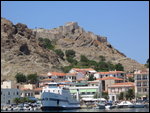
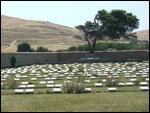
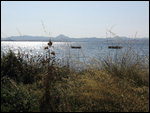
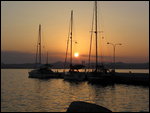
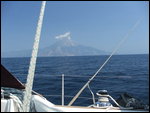
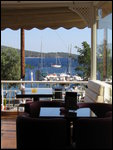
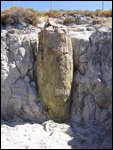
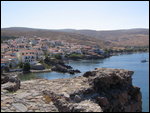
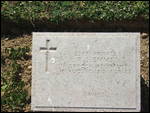





2025-05-22